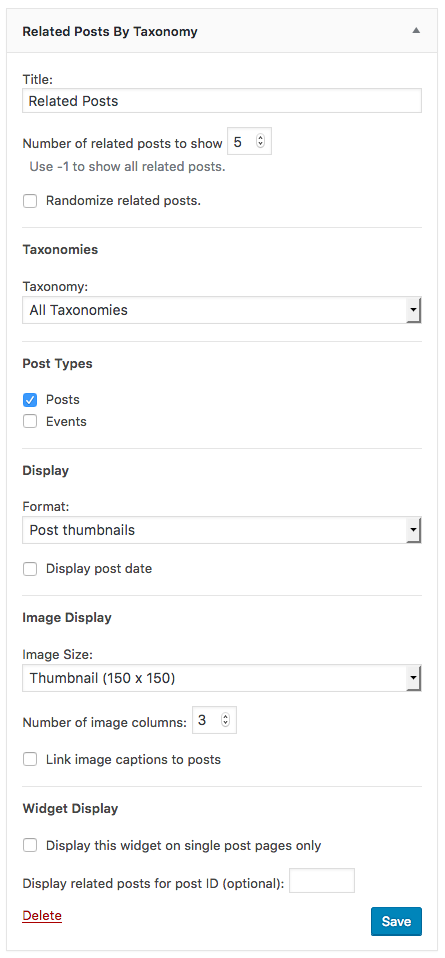Related Posts by Taxonomy: Breakdown

The Related Posts by Taxonomy plugin works by generating a list of related posts to the content a user is viewing on the website. This list is based on the post’s taxonomy, post title, content, and some post meta data. For example, if a user is looking at a post titled “How to Bake a Cake,” the plugin might show other posts tagged with “baking” or “cake.” The post title and content is also taken into account with the Related Posts by Taxonomy plugin, so the user may see other posts related to “baking” such as “How to Make a Pie” or “How to Bake a Batch of Cupcakes.”
The Related Posts by Taxonomy plugin also supports custom post types and custom taxonomies. This means users with complex websites can create specific taxonomies and related posts for each custom post type. For example, an e-commerce website may have two different post types: “Product” and “Blog Post.” By creating a taxonomy that relates the two post types, the plugin can create relationships between product posts and blog posts that contain related content. This way, a product post may link to related blog posts that review that product and a blog post may show related products.
The Related Posts by Taxonomy also provides customization options for outputting the related posts. Users are able to set the number of posts to display, choose from three styles of output, and sort the posts by relevance or alphabetically. Additionally, the plugin also supports custom post title and image attributes so users can modify the titles and images of their related posts for greater relevance.